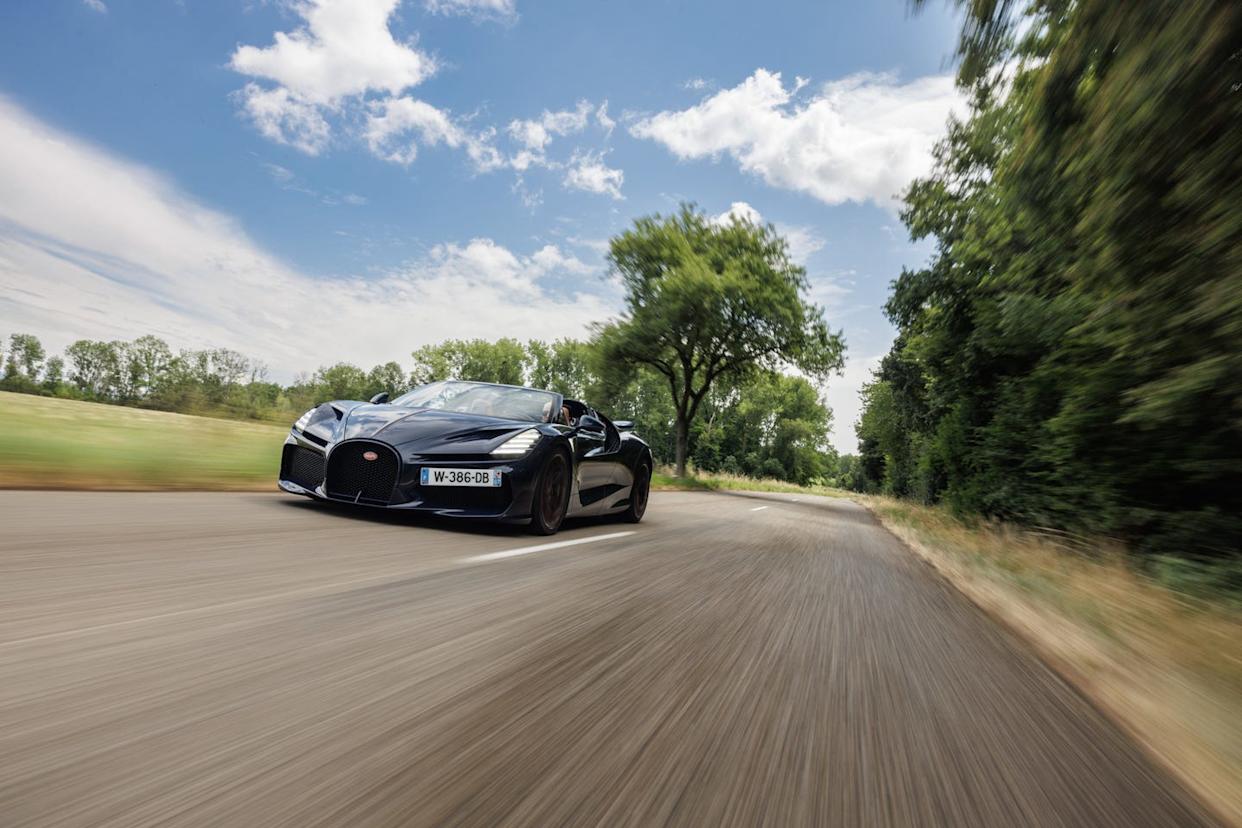
Modern-era Bugatti is not short of haters. From the moment the Veyron was unveiled more than a quarter-century ago, many reckoned the idea of a performance car designed to prioritize ludicrous peak velocities over handling precision as anathema. To this logic, the Veyron and its successors were overweight, overpowered gee-gaws for insecure number-obsessed billionaires anxious to flaunt their wealth.
It is definitely true that some of Bugatti's customer base does indeed fit that description. But the company's products are also truly exceptional pieces of engineering, huge effort, and expense, ensuring each one can deliver on the company's outlandish performance claims. It is impossible to drive any modern Bugatti without experiencing both shock and awe.
But the Mistral marks the end of an era, as the last series-produced roadgoing Bugatti to use the quad-turbocharged W-16 engine that was created to power the Veyron. Following Rimac's acquisition of a majority stake in the brand, the decision was taken to create a new plug-in hybrid powertrain for the forthcoming Tourbillon, one that will use a naturally aspirated Cosworth-developed V-16.
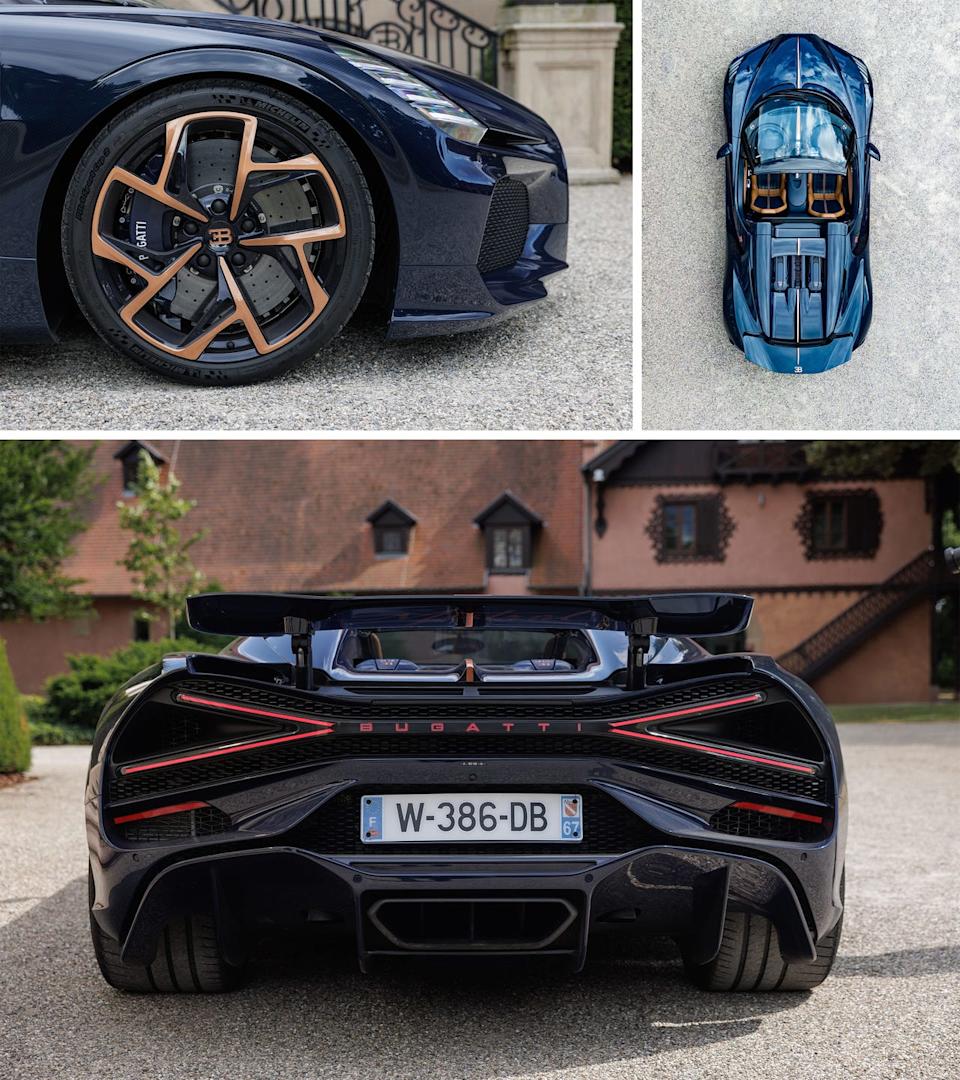
Things move at a leisurely pace at the very top of the market. The Mistral was first shown at the 2022 Pebble Beach Concours, with Bugatti announcing simultaneously that the entire run of 99 cars had already been sold. This despite a minimum buy-in of $5 million, with the possibility of increasing that significantly with bespoke optioning. Nearly three years later, the chosen few are starting to take delivery, with Road & Track invited to drive the Mistral on roads around Bugatti's factory in Molsheim, France.
When Bugatti introduced the Chiron it promised it would never build an open-topped version. The Mistral doesn't break that pledge but wraps roadster bodywork around the same core mechanical components. All bodywork is different, with no external panels shared between cars. The Mistral also gets an edgier, more aggressive design. But despite lacking a full-time roof, it isn't a true convertible, at least not in the easily convertible sense. The Mistral is designed to be roofless, with only a clip-in fabric hood supplied for emergencies, and this only rated for use at speeds of up to 100 mph. If rain is forecast, Mistral buyers will either get wet or—more likely—select another of their many vehicles.
Underneath is basically all Chiron. Like the coupe, the Mistral has a carbon-fiber structure built by Dallara in Italy and the same mid-mounted quad-turbo 8.0-liter W-16. This is in the same 1578-hp state of tune as the Chiron Super Sport 300, which set a production-car speed record of 304.77 mph in 2019. The Mistral has also set its own benchmark, with a recorded 282.05 mph at a test track in Germany last year, making it the fastest open-topped road car in the world. Andy Wallace, former Le Mans winner and now Bugatti's chief test driver, was the man who set both records, and is the guy who greets me when I get to Molsheim. His colleague, former DTM champion Bruno Spengler, accompanies me on my drive. Anybody who buys a new Bugatti will be introduced to their car for the first time by one of the pair.
For all the bling-bling and bragging rights, the secret of modern-era Bugatti has always been the duality of its car's characters. Behind the big, scary numbers they are supremely easy to drive, and the Mistral continues that tradition. Win a big enough lottery, and you could graduate straight from something like a Mustang and not find the experience overwhelming. At low speeds, at least. While most supercars bombard their drivers with noise and sensation, the Mistral is, like the Chiron, definitely a grand tourer.
Beyond the width of the sill, getting in is easy, and the doors are conventionally hinged rather than look-at-me scissors. The cabin is roomy enough to share with a passenger without bumping elbows. The huge engine is tractable and happy at low revs, and the twin-clutch transmission shifts smoothly when asked to trundle through town. Ride quality is good too—and the Mistral has enough ground clearance to cope with chunky French speed bumps without needing to activate the front-end lifter. Cruising at a law-abiding 130 km/h (81 mph) on the French Autoroute, the cabin was free of buffeting and quiet enough for Spengler and me to converse in normal tones.
But I'm guessing you didn't come here for "normal," "quiet," or even "law-abiding." Which brings me—on a quiet, empty back road—to what happens when I press a little harder and the Mistral transforms almost instantly from Jekyll to Hyde. There's a beat of pause as the W-16's turbochargers spool up, another tenth or so as the transmission downshifts, and then fury arrives.
Longitudinal g-forces pass straight from impressive to alarming; anybody who has been launched from an aircraft carrier by a steam catapult might recognize the sensation, but it is outside the frame of reference for the rest of us. I'm lucky enough to have driven several examples of both the Veyron and the Chiron over the years, but I've never managed to get the accelerator pedal to the floor in any without swearing. The Mistral kept that record intact.
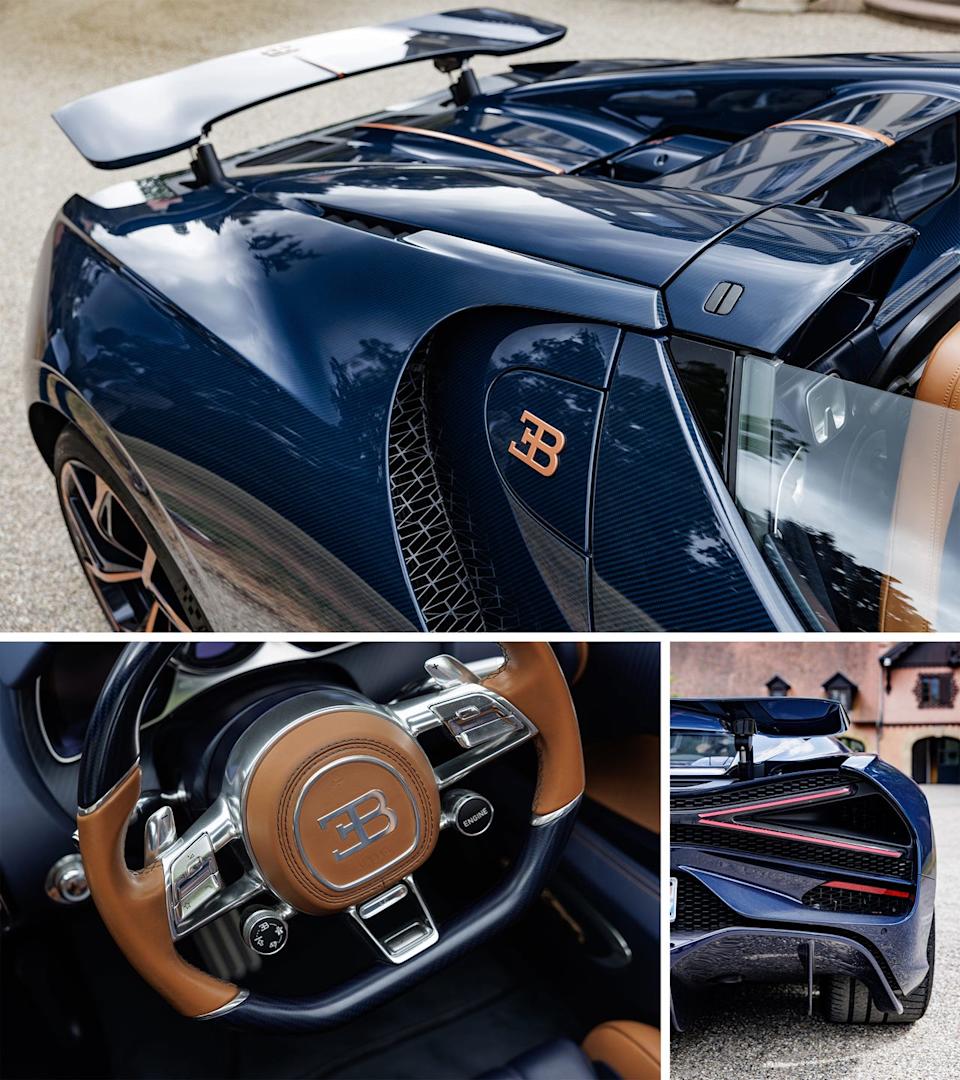
While performance is near-identical to the Chiron—zero to 60 mph in the low twos, zero to 124 mph in under seven seconds—the Mistral feels subjectively quicker thanks to rushing airflow and less-filtered exposure to the engine's remarkable collection of noises. At low revs the W-16 burbles like an expensive speedboat, a bubba-bubba note overlaid by the mechanical thrash of the hugely complex valvetrain. Throttle application brings a corresponding level of induction noise, with corresponding wastegate whistle when easing the gas. Pushing harder brings the full Götterdämmerungas, the vast quantities of hot gases flowing through the exhaust take over the aural experience. Yet lifting off the throttle immediately turns it gentle again.
The Mistral isn't a high revver, the redline at a relatively lowly 7100 rpm. But it doesn't need to be. Perhaps the most telling statistic on the sheet is the fact the 1180-lb-ft torque peak is available across a flat plateau that extends all the way from 2250 rpm to 7000 rpm.
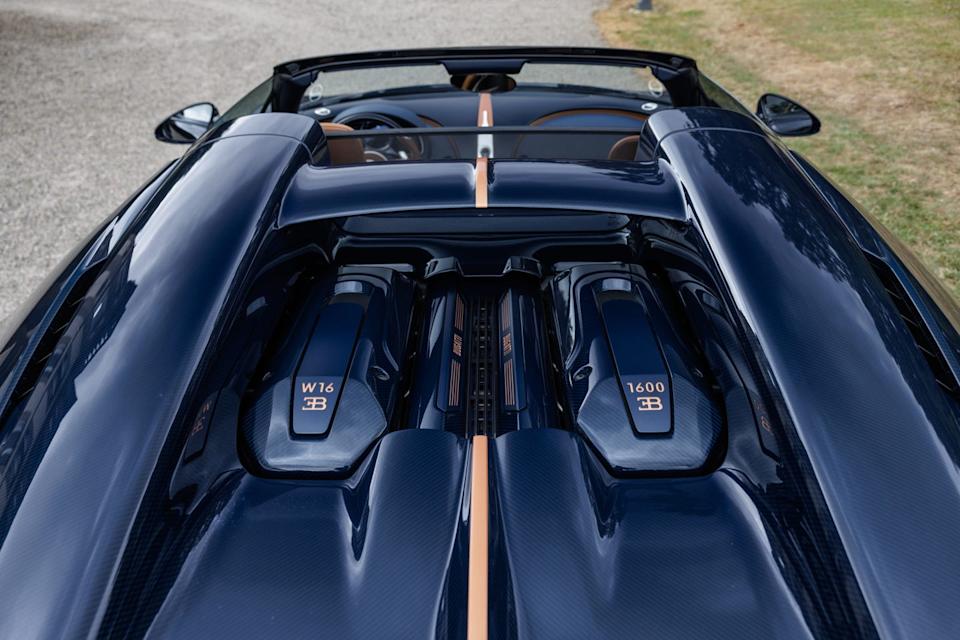
The engine dominates the Mistral experience to the extent it was a little hard to isolate other parts of the car's dynamic makeup. This is a big, heavy car by segment standards, and although it is easy to place, the size still felt like a limitation on narrower roads—and the mass becomes obvious in tighter corners. Yet despite the power and torque, traction was exceptional. The only time I felt any significant slip from a driven wheel was when turning around at low speed in a gravel carpark.
The Mistral's control weights are surprisingly soft for such a potent hypercar. Steering is light and lower geared than most rivals, clearly designed for high-speed stability over darty responses, although the Mistral is still quick to respond to deliberate inputs. Similarly the brake pedal is soft at the top of its travel and easy to modulate at gentle application, but the vast carbon-ceramic discs bit hard when I needed to lose big speeds in a hurry. The seven-speed transmission is lightning fast, but even manual control won't hold gears when the engine reaches the limiter—it always changes up. To be honest, the rate at which it can devour ratios at full throttle means this makes sense.
The real world is rarely big and empty enough to experience the Mistral's full brutality for more than a couple of seconds at a time, but doing so always feels special. Top speed for the production version is limited to 261 mph—21 mph short of the record-setting car—but it is hard to see that will be a limiting factor too often. As with the Chiron, the Mistral also has a neat Easter egg, but also a potentially incriminating one. Pressing and holding one of the climate-control buttons changes the displays to report on the maximum power and top speed since the car was started. By the time I returned to Molsheim, my top scores were 1592 hp—slightly above the engine's official peak—and censored for legal reasons.
Bugatti's W-16 dynasty ends as it began. The Mistral is both an overpriced gee-gaw for insecure billionaires, and also a stupendous piece of automotive engineering. The lack of a roof makes it less practical than the Chiron, but this end of the market isn't where either-or decisions get made. One snippet from my time in Molsheim was learning that many Mistral buyers are combining visits to see their cars under construction with specification sessions for their forthcoming Tourbillons. The hybridized V-16 will have a very different character, revving to 9000 rpm and working with the assistance of three electric motors.
The Tourbillon will also be even faster, hard though that is to believe.
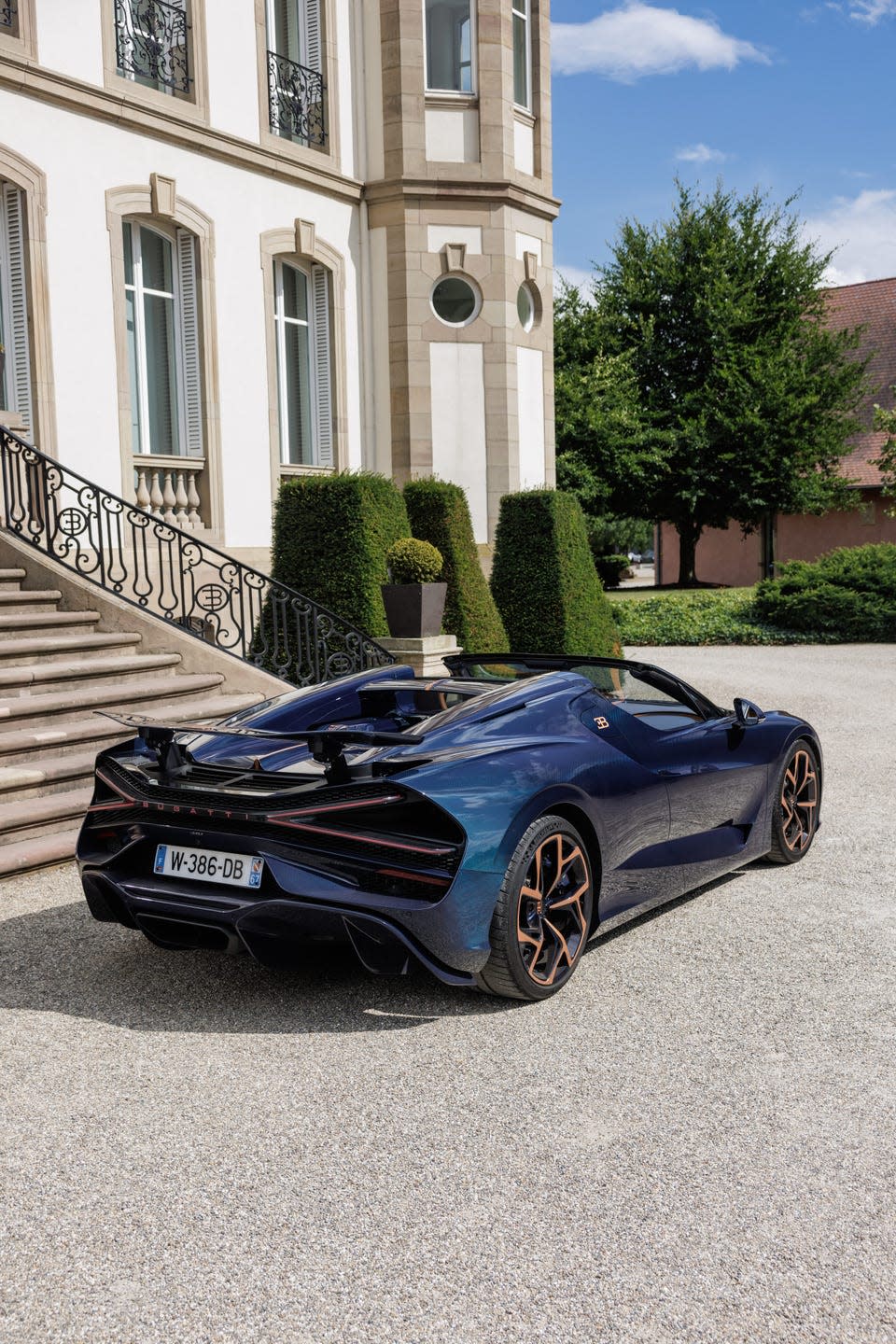
You Might Also Like

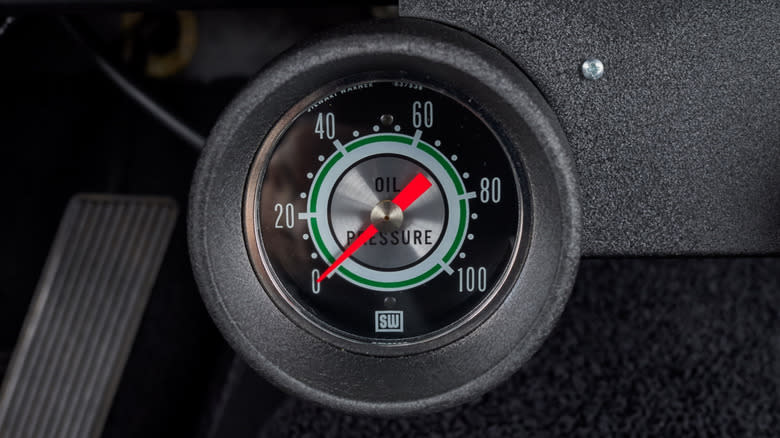



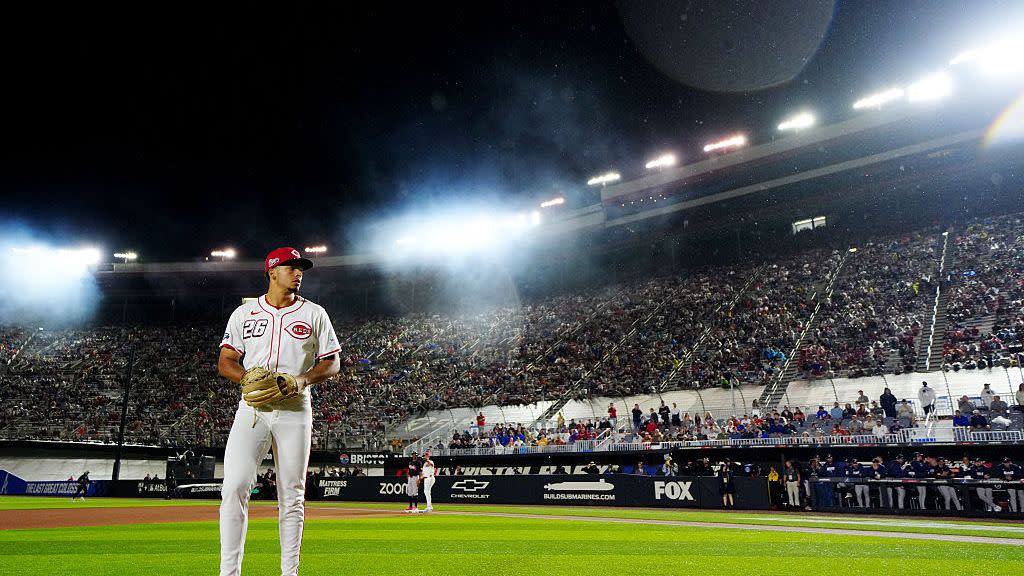

Comments